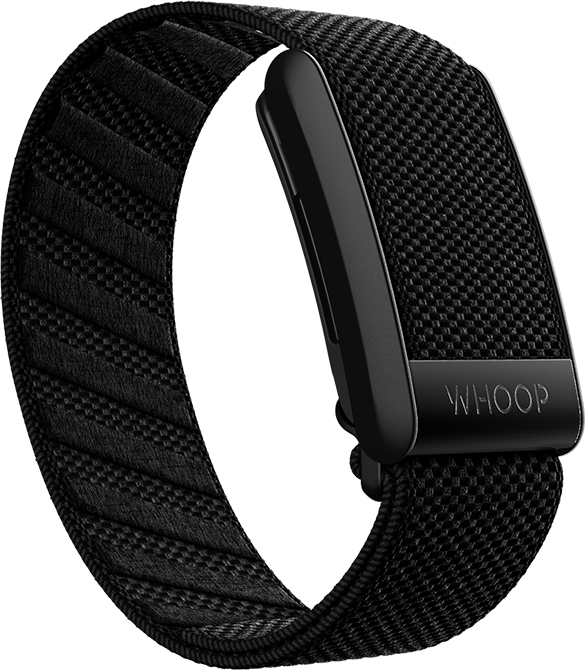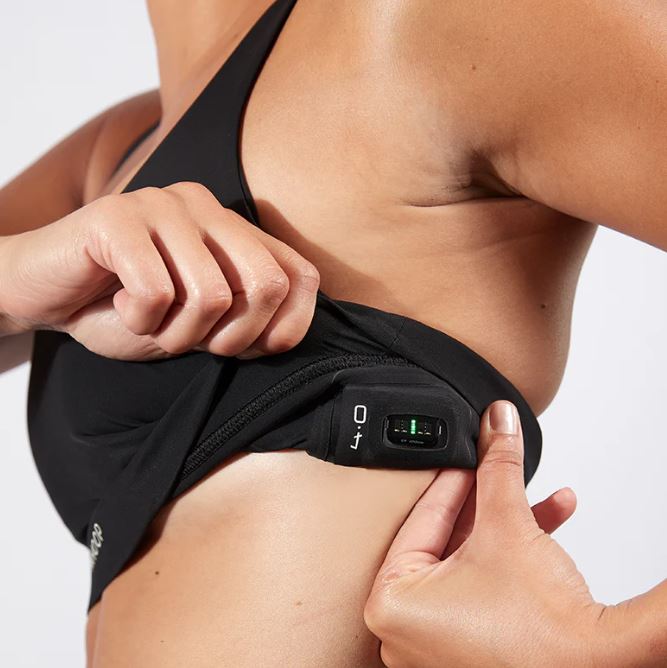We’re Health Editors Who Test Products Day In, Day Out – and Were Blown Away by the Viral Whoop Fitness Tracker
Currently on sale for the lowest price ever available for any WHOOP device.
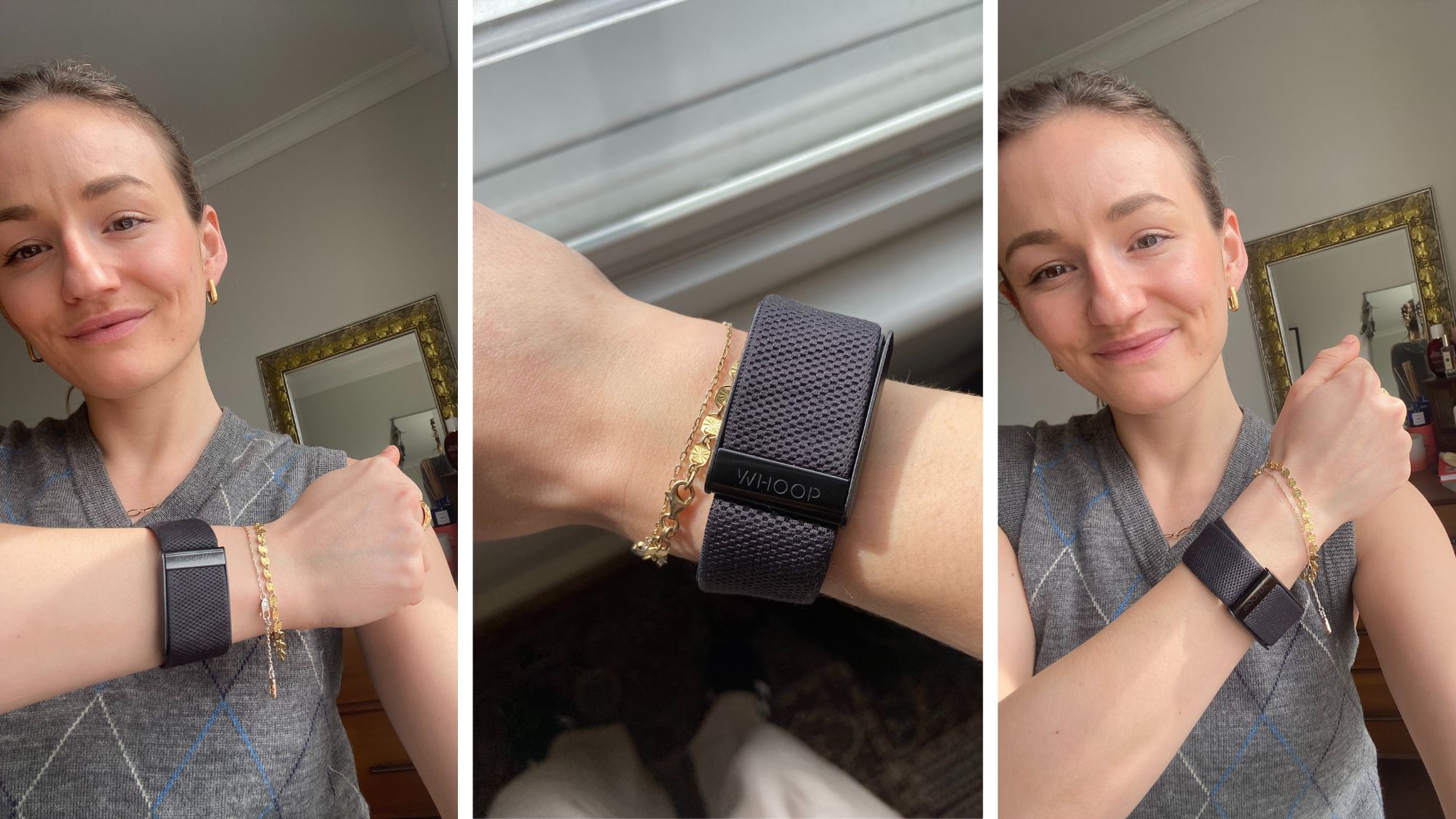
-
+
Very detailed overview of fitness stats
-
+
Chic and stylish
-
+
Easy to navigate
-
-
Monthly subscription fee
-
-
Tailored towards athletes and those who train hard.
If you're someone, like us, who enjoys eating well, working out and generally keeping tabs on their health and wellbeing, then you'll likely have seen Whoop fitness trackers on your social media feeds.
Loved by athletes, celebrities and fitness influencers alike - Vogue Williams and two-time CrossFit Games champion Katrin Davidsdottir are both fans, plus arguably the most famous basketball player in the world LeBron James is an investor - the fitness tracker is a first of its kind for a number of reasons.
Firstly, it doesn't have a watch face, sending all your stats directly to the app on your phone. Plus, the variables it tracks are pretty hardcore - unlike a Fitbit, which monitors your steps, Whoop trackers monitor what they call your "fitness level", a combination of your skin temperature, blood oxygen levels, heart rate variability and resting heart rate.
Users have called it "transformative" - so, naturally, we were keen to get our hands on it and put it to the test. Would it dramatically improve our recovery, sleep, and general fitness? Keep scrolling to find out - and note, it's currently 17% off in the Amazon Prime Day sale, meaning you can get it for the most affordable price. Don't miss our guides to the best fitness trackers and best Fitbits, while you're here.
Ally's Whoop review: "I'm a bit of a nerd about tracking my fitness - this tracker offers all the info you need"
Shop Whoop at the lowest price ever available this Prime Day:
- Whoop One - was £169, now £152.10 at Amazon (save 10%, lowest price ever)
- Whoop Power Pack - was £29.99, now £20.99 at Amazon (save 30%)
- Whoop Superknit Band - £44 at Amazon
What I liked about the Whoop 4
Full disclaimer for you: I'm a bit of a nerd when it comes to tracking my fitness.
I've had a Garmin for around five years now and love seeing my fitness score improve month on month (not always, but often). Having read rave reviews about the Whoop online, I was keen to level up my fitness tracking - literally, as the tracker promises to offer more detailed and thorough stats from other competitors on the market.
So, pros: it was easy enough to set up and charge, and I found that the battery life lasted for a few days (not the full five days as promised on the website, but a good three to four before you needed to plug it in).
Celebrity news, beauty, fashion advice, and fascinating features, delivered straight to your inbox!
I quite liked that it didn't have a watch face - rather, I just needed to load the app on my phone to check in on my recovery, sleep stats and more. While some will find this a pain, I liked that I wasn't constantly being reminded to take more steps by a flashing screen strapped to my wrist. Plus, as a colleague pointed out, it means you can wear the tracker alongside your more fashion-focused watch and not look like you're wearing two watches at once.
If you're after a simplistic device to tell you that you've hit your daily steps, the Whoop is, in my opinion, too complex. It doesn't actually track your steps or how many stairs you've climbed. You also can't track runs or workouts on it as easily as say, a Garmin, but it does auto-track your workouts for you and tell you how long you were active based on your heart rate zone and cardiovascular strain.
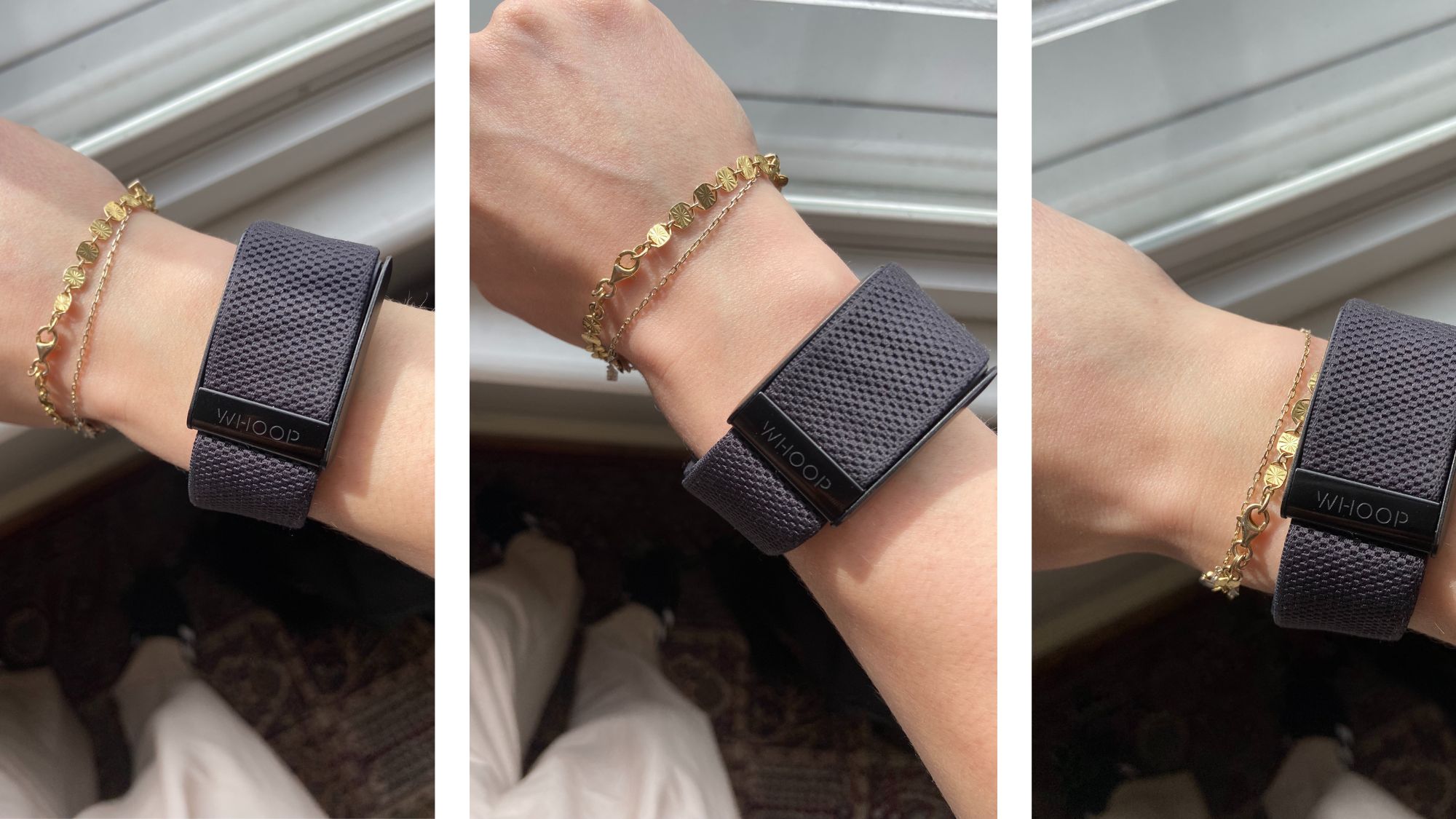
What the Whoop looks like on
The main factor that piqued my interest initially was Whoop's daily "readiness score," as above, a combination of your skin temperature, blood oxygen levels, heart rate variability and resting heart rate.
In a nutshell, the entire aim of the watch is to take into account your daily strain, measure these variables against your base rate and advise you from there. That is, if your heart rate was through the roof during a particularly spicy high-intensity interval training workout yesterday and you didn't get much sleep, your readiness score will be lower, and it'll advise you to do less today to make sure you don't end up injured.
This is a breath of fresh air in an industry that sometimes feels designed to overpush us. I can't count the number of times my Garmin has told me my training is unproductive at the end of a 16-week marathon training cycle, simply because I'm in taper week and so purposefully doing less that week to make sure my body recovers.
It was really fascinating to learn from, and for the three months I tested the tracker, I loved checking in on how long it suggested I needed to recover post-session. As a runner who regularly smashes interval training, long runs and strength training sessions, too, it made me more mindful of spacing out my workouts and getting enough recovery time in.
A post shared by WHOOP (@whoop)
A photo posted by on
In a clever new move from the brand, they've also designed bras with panels for the trackers to slot into - a great option for those of you who are keen to test your fitness but don't want to wear a thick black strap around your wrist. I enjoyed testing out this functionality and found it almost impossible to forget to put it on (you're far more likely to forget to wear a watch than a bra, right?).
I liked the emphasis on sleep a lot, too - so many trackers are great for getting you up, out and exercising, but don't put anywhere near enough stress on the recovery stage of training, too. As someone who's taken nearly an hour off their marathon time over the past five years or so, I can confidently say that getting eight hours of sleep a night has played a large part, so I'm very here for all Whoop teaches you about the importance of sleep quality.
It neatly delivers you a "sleep performance" score and, what I learn over my three months of testing, is that while I'm in bed for eight to nine hours every night, the quality of my sleep is actually quite poor, and it's taking me around 45 minutes to drift off every night. Not only that, but I'm waking up regularly without realising it. With that in mind, I introduce a new bedtime routine and start charging my phone in the hallway - both of which really help to boost the quality of my shut-eye and how I'm feeling overall.
The new Whoop 4 includes a new and improved sensor configuration that promises to improve the tracker's general accuracy and heart rate measurements. It's also around a third lighter than previous iterations. It's a smart device, I'll tell you that for free - before I even know I'm feeling under the weather in mid-January, it's telling me to rest and take things easy. As someone who trains a lot, it was helpful to be told when to go slow or to know when my body might not be able to push my speed.
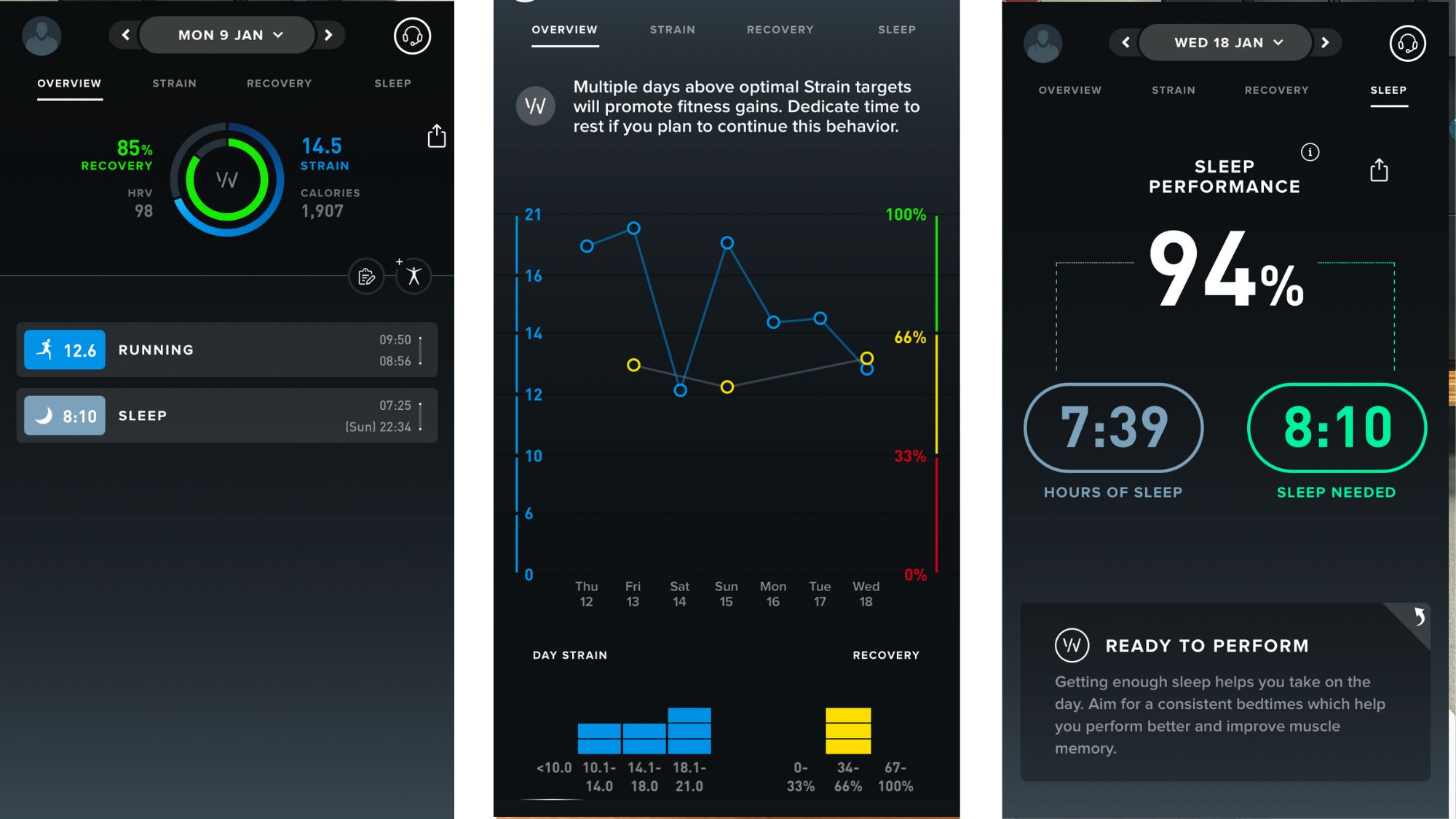
An example of my data mapped in the Whoop app
Okay, on to the cons: I did find that it sometimes took upwards of an hour for the Whoop to upload the data to my phone, which, if you just want to check how long you slept, gets a bit tiresome. Plus, as a self-professed sweaty human, wearing the band for working out meant that, more often than not, I was left with a soggy band strapped to my wrist (not the one).
On several occasions, it told me I'd slept for three hours or so when I know for a fact that, despite waking up in the middle of the night, I did fall back to sleep. Not just that, but it sometimes told me my optimum sleep time was anything from nine to ten hours a night - a target which, even as someone who loves sleep, really didn't feel manageable alongside a busy career, social life, and training miles to fit in.
Plus, as a pretty dedicated runner, I felt I needed more details from my runs than simply distance, pace, and duration - I'd have liked a breakdown of each kilometre, for example, or even a breakdown of heart rate zone during my workout (I've no doubt you can find this on the app, but not easily).
My main gripe was the overload of data. I found it quite hard, and at times, near impossible, to navigate the onslaught of stats provided. Unlike with other wearables, where it's packaged up neatly for you, Whoop doesn't hold back on - and this is coming from someone who loves fitness data and working through what it all means.
Valeza Whoop review: "It's chich and the stats are among the most accurate and detailed I’ve seen"
As far as screenless fitness trackers go, WHOOP is definitely one of the chicest designs. The woven bracelet strap can be easily changed to suit your outfit - I have the grey, black and chocolate brown straps and am looking to add to my collection further. But this tracker doesn’t just look good - it’s effective at tracking your fitness levels, too.
It not only tracks your active training but your sleep and recovery, too. Yes, it might be a bit of an information overload at first, but the stats are among the most accurate and detailed I’ve seen, so if that’s your priority, you’re in good hands.
Importantly, once the app learns more about you, you start to get notifications and advice that’s much more tailored to your needs. I personally love the screenless design, as I appreciate the fact that I can check on my progress in the app as and when I want to. If you're a bit anxious about exercising or want more of an all-around progress report, this is a brilliant tracker.
Is Whoop worth the money?
We are both in agreement that this will totally depend on the type of person you are, what you're looking to track, and whether you find fitness data overwhelming or empowering. Ally preferred listening to her body, whereas Valeza found the Whoop tracker chic, stylish and easy to use, not to mention helpful for checking in on her day-to-day fitness stats.
We had an interesting chat with personal trainer and biomechanics expert Anthony Fletch, co-founder of One Track, about this recently, too, where we discussed how navigating too much data can often be counter-intuitive. We'd be interested to know how much it impacts you psychologically knowing that you haven't rested as well as you would have liked to.
Of course, you can spin this the other way, too - no doubt I had days where I'd initially felt tired but had a more can-do outlook once I clocked my readiness score in the green.
Can you use Whoop without the membership?
The Whoop membership clocks in at around £16 a month for 24 months or £19 for 12 months, delivering all of the neat data straight to your mobile device.
That said, I definitely think the brand is one to watch, and I'm excited to see what they continue to come up with.
This article was first published in 2022 and has since been updated to include more accurate pricing and Amazon Prime Day price reductions.

Ally is Marie Claire UK's Senior Health and Sustainability Editor, a well-regarded wellness expert, nine-time marathoner, and Boston Qualifying runner.
Utilising her impressive skillset and exceptional quality of writing, she pens investigative, review and first-person pieces that consistently demonstrate flair and originality.
As well as writing, Ally manages a team of freelancers, oversees all commissioning and strategy for her pillars, and spearheads the brand's annual Women in Sport covers, interviewing and shooting the likes of Mary Earps, Millie Bright, and Ilona Maher. Shortlisted for three BSMEs and winning one in 2022, Ally lives and breathes her verticals: her eye for a story and connections within the wellness sphere are unrivalled. Follow Ally on Instagram for more.

